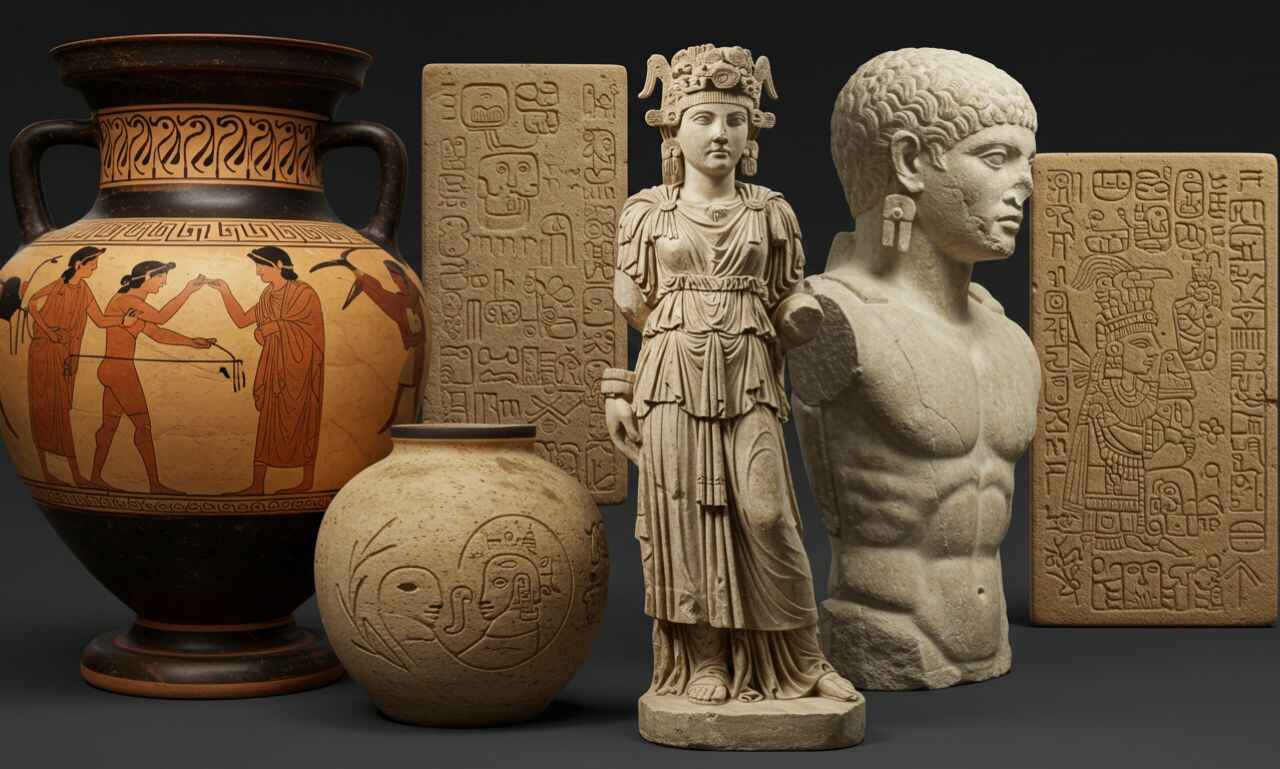Art has always been at the heart of human civilization. From the earliest cave paintings to the grand architectural wonders of ancient civilizations, creativity has defined our history. The concept of Ancient Artz takes us back to these timeless expressions, showing how art not only preserved culture but also influenced the world we live in today.
In this blog, we will explore the meaning of Ancient Artz, examine different forms of ancient art, and explain why they remain relevant in our modern world.
What is Ancient Artz?
The term Ancient Artz is a modern twist on the phrase ancient art. The addition of “z” brings a fresh, creative feel while still honoring the roots of traditional art forms. Ancient Artz represents:
-
Historic art styles from civilizations like Egypt, Greece, Rome, China, and Mesopotamia.
-
Cultural expressions preserved in sculpture, painting, pottery, and architecture.
-
A fusion concept where past creativity inspires today’s modern art movements.
By looking at Ancient Artz, we discover how creativity has evolved, and why it continues to inspire new generations.
The Role of Art in Ancient Civilizations
Ancient art was never just about decoration—it was about communication, storytelling, and cultural identity. Civilizations used art to:
-
Record historical events.
-
Worship gods and express spirituality.
-
Showcase power, wealth, and influence.
-
Teach values and traditions.
For example:
-
The Egyptians used hieroglyphics and tomb paintings to guide the dead into the afterlife.
-
The Greeks celebrated human beauty and strength in marble sculptures.
-
The Chinese perfected calligraphy and porcelain to honor philosophy and harmony.
These forms of Ancient Artz show us how deeply art was woven into everyday life.
Types of Ancient Artz
Ancient Artz covers a wide range of creative expressions. Here are the most prominent forms:
1. Cave Paintings
Some of the oldest examples of art are found in caves, such as the Lascaux caves in France. These paintings depict animals, hunting scenes, and early human life. They prove that even thousands of years ago, humans used art to communicate and preserve memory.
2. Sculptures
From the Greek statues of Zeus and Athena to the Egyptian Sphinx, sculptures were used to honor gods, rulers, and heroes. Their craftsmanship still amazes us today, representing the precision of ancient artisans.
3. Pottery and Ceramics
Civilizations like the Chinese and Greeks created pottery not only for practical use but also as a canvas for storytelling. Patterns, symbols, and images reflected mythology, philosophy, and cultural beliefs.
4. Architecture
The Pyramids of Egypt, Roman Colosseum, and Greek Parthenon are timeless examples of architectural art. These structures highlight both aesthetic beauty and engineering brilliance.
5. Calligraphy and Writing
Ancient scripts and calligraphy in China, Mesopotamia, and India were more than writing—they were artistic expressions. Each stroke carried meaning, precision, and beauty.
The Symbolism in Ancient Artz
One of the most fascinating aspects of Ancient Artz is its symbolism. Unlike modern art, where interpretation is often personal, ancient art had clear cultural meaning.
-
Animals often represented power or spirituality (e.g., bulls in Mesopotamia symbolized strength).
-
Colors carried meaning: gold for eternity in Egypt, red for luck in China.
-
Shapes and patterns reflected cosmic beliefs and religious systems.
This symbolic depth shows how art was not just an aesthetic choice but also a language of civilization.
Why Ancient Artz Still Matters Today
Despite being centuries old, Ancient Artz continues to influence modern society. Here’s why it remains relevant:
-
Cultural Identity – It connects us to our roots and ancestors.
-
Inspiration for Modern Art – Many contemporary artists borrow techniques, themes, and styles from ancient art.
-
Tourism and Economy – Sites like the Pyramids or Parthenon attract millions, boosting cultural tourism.
-
Education – Ancient art provides insight into history, sociology, and anthropology.
-
Timeless Aesthetics – Designs inspired by ancient patterns are still used in architecture, fashion, and digital art.
Ancient Artz in Modern Times
The digital age has given rise to Neo-Ancient Artz, where creators merge ancient inspiration with technology. Examples include:
-
3D reconstructions of lost monuments.
-
NFTs inspired by ancient art forms.
-
Virtual museums that allow users to explore ancient art digitally.
This shows that ancient creativity is not confined to the past—it continues to live in the modern imagination.
Preserving Ancient Artz
Unfortunately, many ancient artworks face threats from:
-
Pollution
-
Looting and theft
-
Climate change
-
Neglect
Organizations like UNESCO work to protect and preserve these treasures. By studying and appreciating An.cient Artz, we also commit to keeping it alive for future generations.
Conclusion
Ancient Artz is more than just history—it is a reflection of humanity’s endless creativity, passion, and quest for meaning. From cave paintings to grand temples, every piece of ancient art tells a story about how civilizations lived, worshipped, and dreamed.
Even today, Ancient Artz inspires modern artists, architects, and designers, proving that creativity is timeless. As we look forward, it’s essential to preserve these masterpieces while finding new ways to integrate their beauty into our daily lives.
In short, Anc.ient Artz bridges the past and present, reminding us that while civilizations may rise and fall, art endures forever.
